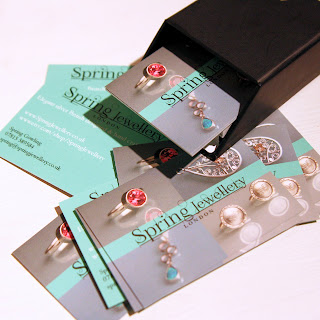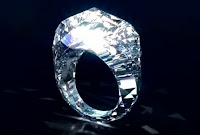As
design is such a huge aspect of silversmithing and
making jewellery, I’m constantly on the look out for new sources of inspiration
and ways to get my creative juices flowing. There are those that say creativity
cannot be taught – which I agree with, but you can consciously spend time
working on a few techniques to allow for more creativity, and you can build up
your own sources of inspiration.
Creative
techniques
There
are quite a lot of techniques out there for generating good ideas for a new
design. Firstly – I recently learned that it’s not all about generating
immediate ideas: the concept of ‘incubation’ is pretty new to me but is about
thinking about a concept for a new idea, then mentally ‘parking’ the idea and
not consciously processing it, which gives the sub-conscious time to process.
If you’ve ever had the best ideas for a new design pop up at a random time,
this is what incubation tries to encourage more of.
Bed,
Bath, Bus. It’s a recognised concept that these are often the places where we
come up with the best ideas, because our brains are not consciously working on
anything too difficult. So definitely make use of these sorts of moments and
flashes of inspiration – I now always carry around a notebook to capture them.
SCAMPER
Brainstorming
is a well-used technique of mine to start thinking through different beginnings
of ideas. I’ve also started using SCAMPER as a good technique for generating
lots of ideas (they don’t all have to work – the point is to put every idea
down to build upon, then afterwards you can choose from them):
S – Substitute
Try
substituting a part of your design, or a material, for something else. What
would it look like with plastic, concrete, wood, stones, instead of silver? What
about substituting the colour? Just look at what Swiss Jewellery company,
Shawish did when they substituted the metal in the ring for pure diamond!
C – Combine
Combine
concepts or ideas which wouldn’t normally go together, like a bottle opener
with a bracelet, for example. What about combining different materials?
A – Adapt
Adapt
something you notice in nature, or in a design somewhere completely different,
into your design. Say you wanted earrings with lots of movement – could you adapt
a windmill design to give you that?
M – Modify, Minimise,
Maximise
Can
you modify your design in some way – or take something normally very small and
maximise it to become the key feature of your design – for example making that
rivet that holds two bits of metal together oversized and the main focus of the
design. It works the other way around too – what about taking something large
and making it tiny or, for example, modifying something you would wear on your
head so you wear it on your finger instead?
P – Put to another
use
How
can you take one idea or part of your design and put it to another use? I’ve seen
really clever things done with turning safety pins into the links for bracelets,
for example. Can you give your items dual functionality, like a ring which can
also be worn as earrings?
E – Eliminate
How
can you remove bits of your design for dramatic effect? Instead of adding
metal, what about taking it away? Remove the unnecessary parts.
R - Reverse, Rearrange
Try
switching the norms around, either in materials, designs, ideas. What about reversing
the way you set stones and have it upside-down instead? Challenge all your
assumptions and try something completely different.
Sources of
inspiration
I
find my most-used sources of inspiration fit into either: online or offline.
Offline
- Going
for walks – especially in the countryside I find there is a wealth of
inspiration in nature and natural designs, plus animals and plants are ideas in
themselves to be turned into a metal form.
- Going
to art galleries – sometimes even just the form of a line or the blend of
colours can be inspirational. I also find that being around different types of
art puts me in the right mindset and can really stimulate me to think in terms
of jewellery design
- Visiting
impressive architecture – again, I find that the visual stimulation is often
enough to put me in the right mindset and think particularly about lines, form,
structure.
- Books
and magazines – I like reading fashion magazines for jewellery inspiration, and
similarly there are plenty of books out there that showcase other designers’
work and prompt inspiration in terms of techniques and style.
Online
- Pinterest
– my newest source for both finding and tracking inspiration, I find the idea
of having a visual online moodboard great. It’s really handy for searching for
design ideas, and you can repin things onto your own boards. Check out my
Jewellery Inspiration pin board.
- Etsy
– the home of all things handmade. Although it’s definitely not cool ripping
off other designers’ ideas, there’s plenty of inspiration that can be triggered
by viewing the work of others.
- Flickr - so many beautiful pictures to inspire, plus there are groups on nearly everything, including handmade and jewellery.
- Since
we’re here – Blogs! There are so many blogs with beautiful imagery that I want
to just absorb and soak up.
What gets your creative juices flowing and where do you find inspiration?












